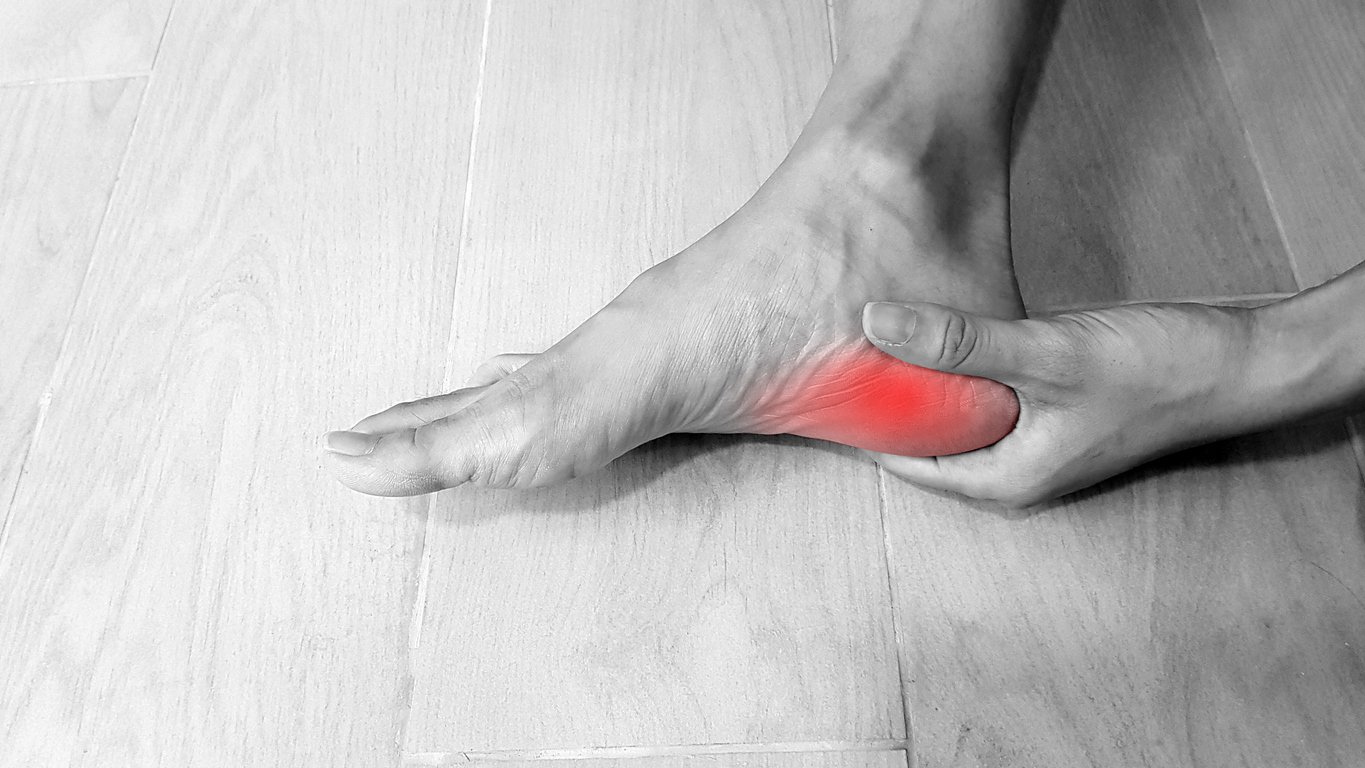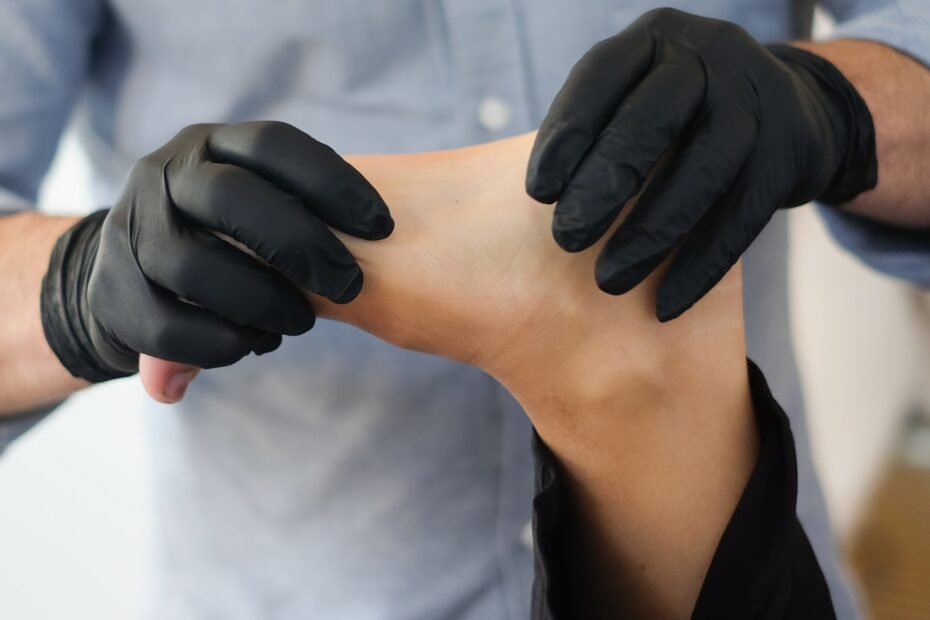Are you struggling with the pain caused by Plantar Fasciitis? It can be an agonizing ordeal, particularly when you’re just trying to get through your day-to-day routine. You may feel like there is no way out of this, but rest assured, there is. Physical therapy can help relieve the pain and discomfort caused by Plantar Fasciitis.
In this article, we will explain how physical therapy works in alleviating Plantar Fasciitis symptoms, the benefits and risks involved in physical therapy treatment, and the different methods of administering it.
We’ll also cover how to find the right physical therapist for you and explore whether Plantar Fasciitis can be prevented with physical therapy. So if you want to get back on your feet and say goodbye to foot pain once and for all, read on!
Understanding Plantar Fasciitis
Plantar fasciitis is a common condition that causes heel pain. It occurs when the plantar fascia, the band of tissue that supports the arch of your foot, becomes inflamed and painful.
Risk factors for plantar fasciitis include obesity, high arches, and repetitive activities.
Physical therapy plays a crucial role in addressing the underlying causes of plantar fasciitis. By incorporating exercises and orthotic devices as part of their treatment, physical therapists can help alleviate symptoms and promote healing.
This condition affects as many as 2 million Americans per year and 10% of the population over their lifetimes. While it most frequently occurs in people in their 40s, plantar fasciitis can affect people of all ages.

Symptoms of Plantar Fasciitis
Individuals with plantar fasciitis commonly experience pain in the bottom of their foot, particularly near the heel. This pain is often described as sharp or stabbing and can be more pronounced in the morning or after periods of rest. Engaging in activities that put pressure on the foot may also exacerbate the pain.
Standing or walking for extended periods can become challenging, and the discomfort typically subsides with rest.
It is crucial to seek medical attention if persistent pain in the heel or foot is experienced. Identifying and addressing these symptoms is an essential part of the treatment process for plantar fasciitis.
Role of Physical Therapy in Plantar Fasciitis Relief
Physical therapy plays a crucial role in the treatment of plantar fasciitis. A physical therapist can evaluate your condition, develop a treatment plan, and guide your recovery. The goal of physical therapy is to reduce pain, improve range of motion, and restore function. This comprehensive approach may include manual therapy, strengthening exercises, patient education, and the use of special devices.
Studies have shown that physical therapy is an effective treatment for plantar fasciitis. By addressing the root causes of the condition, such as biomechanical issues or muscle imbalances, physical therapy can help alleviate foot pain and prevent future flare-ups.
Whether you’re an athlete dealing with sports-related injuries or someone experiencing foot pain from everyday activities, seeking the expertise of a physical therapist can be an essential part of your treatment plan.
Benefits of Physical Therapy for Plantar Fasciitis
Physical therapy for this painful foot condition offers numerous benefits to patients. One of the main advantages is pain relief, which can significantly improve the quality of life for individuals suffering from this condition. Additionally, physical therapy helps to strengthen the foot, calf muscles, and the plantar fascia itself, reducing the risk of future injuries. Improved gait mechanics and temporospatial gait parameters also contribute to better walking and running efficiency, allowing patients to move with more ease and comfort.
Furthermore, physical therapy may be a cost-effective alternative to more invasive treatments like surgery, potentially lowering the overall cost of care. Lastly, physical therapy often leads to a faster recovery time, allowing patients to return to their normal activities sooner.
Risks and Considerations in Physical Therapy for Plantar Fasciitis
While physical therapy for plantar fasciitis is generally safe and effective, there are some risks and considerations to keep in mind. Each individual’s treatment program should be tailored to their specific needs, taking into account their medical history, foot condition, and treatment goals.
It’s important to communicate any pain or discomfort experienced during physical therapy sessions to your therapist. Physical therapy is often just one part of a comprehensive treatment plan, which may also include medication, orthotic devices, and lifestyle modifications.
Following the guidance of your healthcare provider and physical therapist is crucial for the best results. By understanding these risks and considerations, you can make informed decisions about your plantar fasciitis treatment.

How is Physical Therapy Administered for Plantar Fasciitis?
Physical therapy can be administered through in-clinic sessions and home exercises. In-clinic sessions may include manual therapy, stretches, strengthening exercises, ultrasound, and other modalities.
Home exercises typically involve stretching the calf muscles, plantar fascia, and Achilles tendon. Special devices like orthotic inserts or night splints may also be recommended. Regular sessions combined with consistent home exercises can help achieve optimal results.
In-Clinic Physical Therapy Sessions
In-clinic physical therapy sessions for plantar fasciitis encompass a range of techniques to alleviate symptoms and promote healing. Manual therapy techniques such as soft tissue mobilization and joint mobilization can help reduce pain and enhance flexibility. Therapeutic exercises play a significant role in strengthening the muscles and tissues, promoting better stability and function.
Besides these, modalities like ultrasound therapy and electrical stimulation may be employed to decrease inflammation and alleviate discomfort. During these sessions, experienced physical therapists assess the individual’s condition, administer hands-on treatment, and guide them through exercises tailored to their needs. The duration of in-clinic physical therapy sessions typically varies from 30 minutes to an hour, depending on the treatment plan. Effective communication with your physical therapist, following their instructions, and addressing any concerns ensures the best possible outcomes.
Home Exercises for Plantar Fasciitis Relief
Stretching the calf muscles, plantar fascia, and Achilles tendon is key to relieving plantar fasciitis at home. By incorporating specific exercises into your routine, you can help alleviate foot pain and promote healing. Calf stretches, which involve placing your hands against a wall and stepping one foot back while keeping the heel on the ground, can help lengthen and stretch the muscles in the calves.
Additionally, the plantar fascia stretch targets the bottom of the foot by stretching the arch and can be done by sitting and crossing one leg over the other, then gently pulling the toes towards you. Another effective exercise is towel curls, where you place a towel on the floor and use your toes to scrunch it up towards your arch.
Remember, it is crucial to perform these exercises correctly and not overstretch to prevent further injury or discomfort. Your physical therapist will provide specific instructions during in-clinic sessions and demonstrate the exercises to ensure proper form. Consistency and adherence to your prescribed home exercise program are essential for effective plantar fasciitis treatment.
Click here for more info on best exercises for plantar fasciitis.
How to Determine if You Need Physical Therapy for Plantar Fasciitis?
If you’re experiencing persistent heel pain, difficulty standing or walking, or symptoms of plantar fasciitis, it’s important to consult a healthcare provider. A physical therapist can assess your condition, considering factors like your medical history and treatment goals, to determine if physical therapy is suitable for your treatment. Seeking early medical advice can lead to faster recovery and better outcomes.
Finding the Right Physical Therapist for Plantar Fasciitis
When seeking physical therapy for plantar fasciitis, it is important to find a physical therapist who specializes in foot and lower extremity conditions, including plantar fasciitis. Look for someone with relevant qualifications and expertise in sports physical therapy and sports medicine. Consider reading patient reviews or testimonials to get an idea of their treatment approach and success rate.
A good physical therapist will not only have the technical skills but also be a great communicator who listens to your concerns and provides personalized care. Feel free to ask questions about their experience and discuss your treatment goals. Being comfortable and confident in your physical therapist is crucial for a positive treatment experience.
Can Plantar Fasciitis be Prevented with Physical Therapy?
Preventing plantar fasciitis with physical therapy is possible. Strengthening exercises improve foot stability, reducing the risk of injury. Education on foot care, stretching, and strengthening is also essential. Physical therapy addresses risk factors like poor foot mechanics and tight calf muscles to develop an effective treatment plan. A therapist will assess your condition and create a preventive strategy.

What is the Success Rate of Physical Therapy for Plantar Fasciitis?
Physical therapy for plantar fasciitis has shown a high success rate in reducing heel pain and improving foot function. Research studies have demonstrated the effectiveness of manual therapy, exercises, and patient education for pain relief. Patients can expect faster recovery, lower costs, and improved outcomes compared to surgery or other invasive options.
What are some common plantar fasciitis physical therapy exercises?
Common plantar fasciitis physical therapy exercises include calf stretches, plantar fascia stretches, toe curls with a towel, and strengthening exercises for the foot and ankle. These exercises help to improve flexibility, reduce pain, and promote healing of the plantar fascia.
Conclusion
Physical therapy plays a crucial role in providing relief from plantar fasciitis. It helps alleviate pain, improve flexibility and strength, and promote healing. Whether it’s through in-clinic sessions or home exercises, physical therapy offers numerous benefits for plantar fasciitis sufferers.
However, it’s important to consider the risks and consult a professional to determine if physical therapy is the right approach for you.
Finding the right physical therapist who specializes in plantar fasciitis is essential for effective treatment. While physical therapy can greatly help in managing and resolving plantar fasciitis, prevention is equally important.
By addressing risk factors and adopting preventive measures, you can reduce the chances of developing plantar fasciitis.
Remember, the success rate of physical therapy for plantar fasciitis depends on various factors, including adherence to the treatment plan and individual response.
So, consult a physical therapist to create a personalized plan for your plantar fasciitis relief journey.
Thank You!
I hope you have found this blog helpful and please feel free to comment and share.
Keep an eye for further blogs here.
Thanks for reading.
 Tracy J. The heel GP Tracy J. The heel GP |
